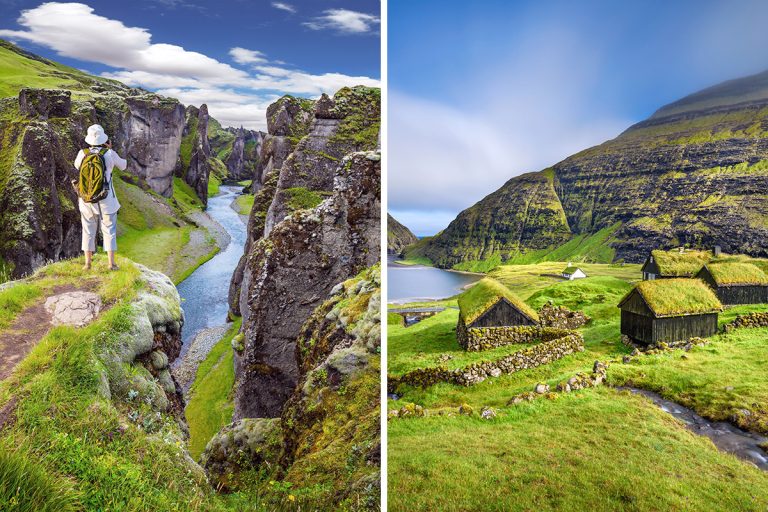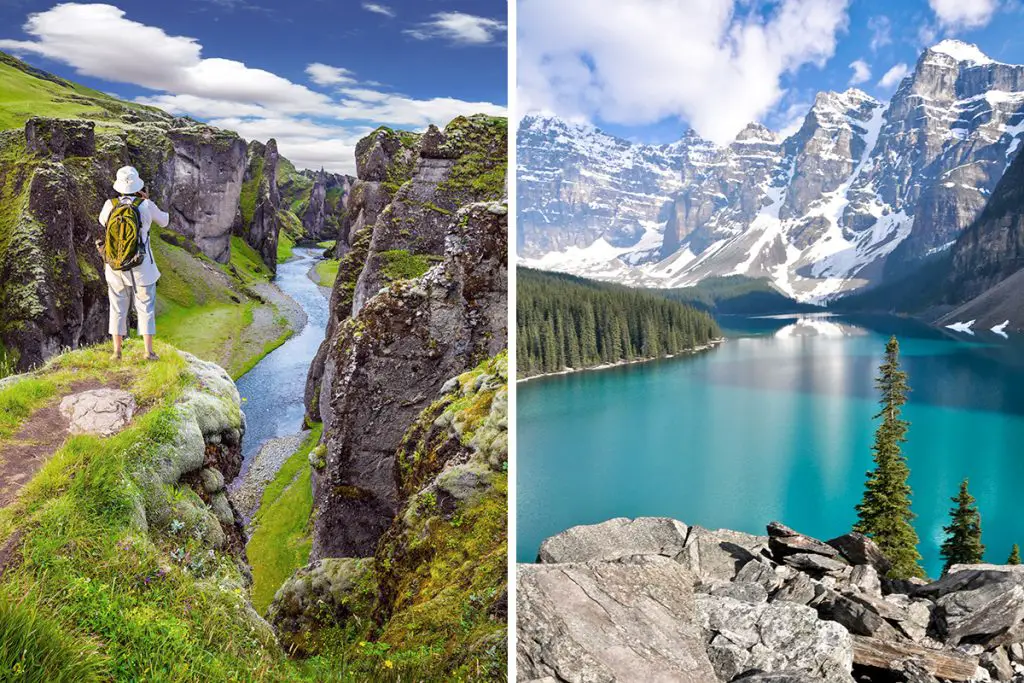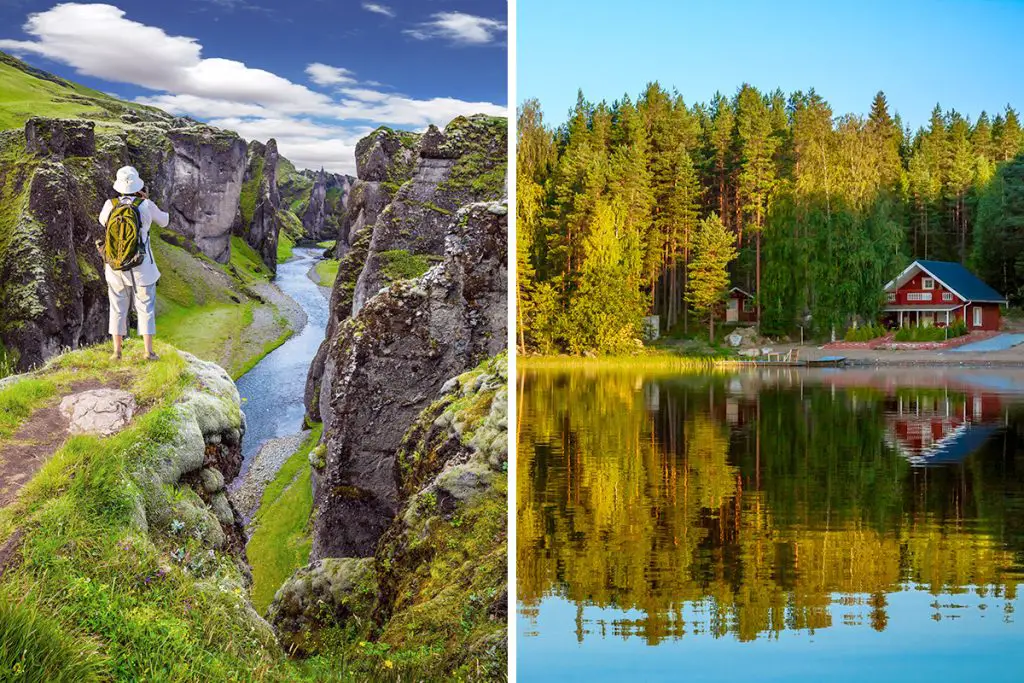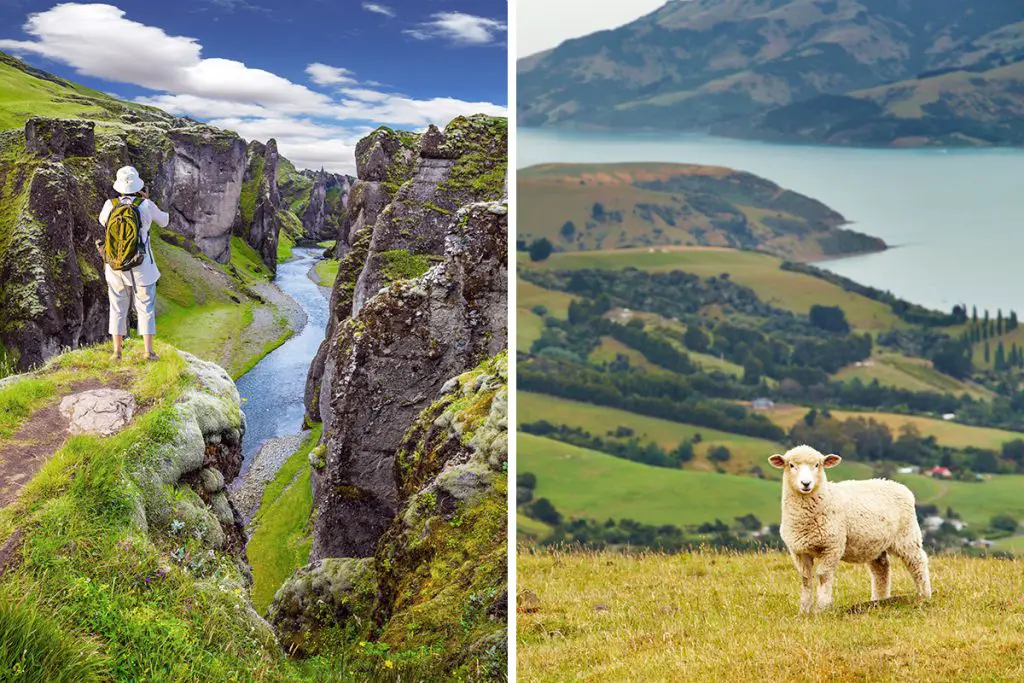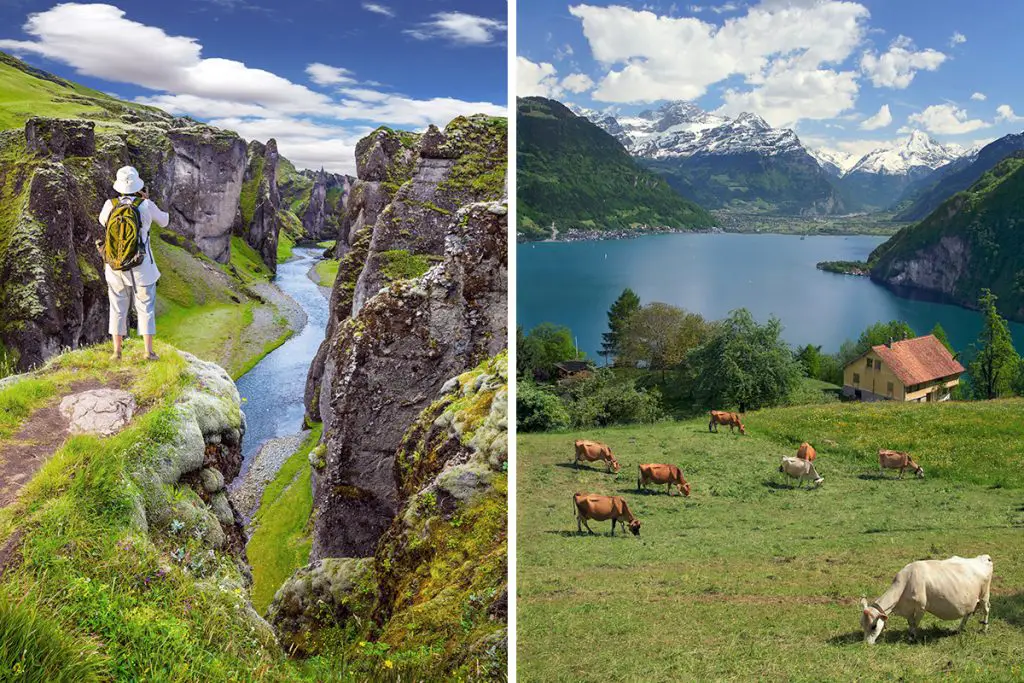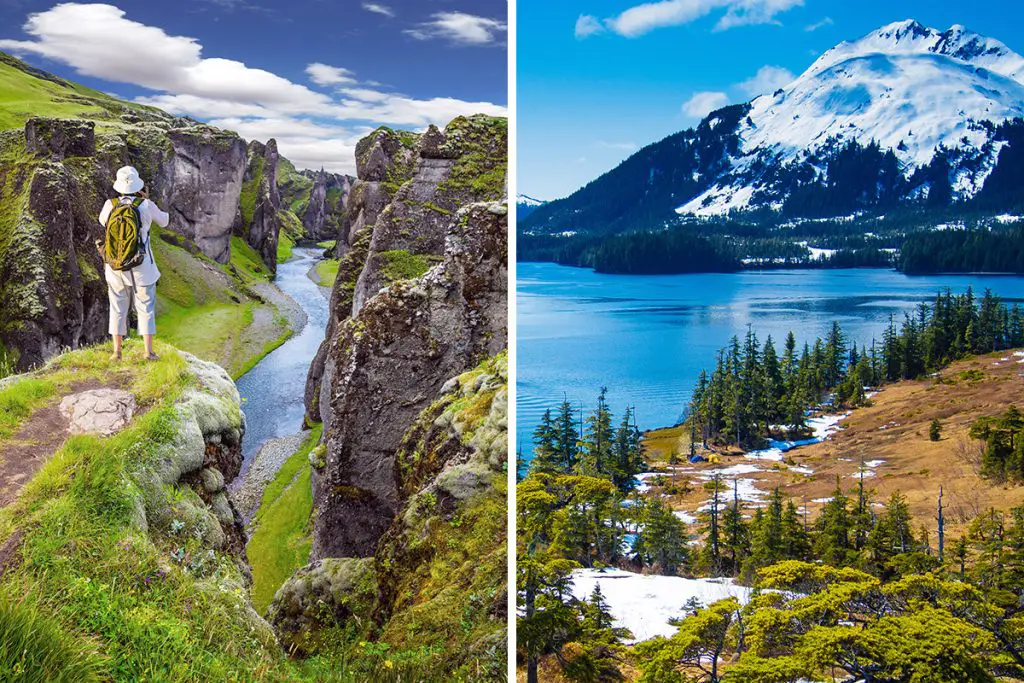Have you ever thought about the rich pasts that each location holds or the traditions that thrive within their borders? If you’re interested in a journey back in time and the opportunity to immerse yourself in diverse cultures, then both of these destinations have something to offer. Buckle up and prepare for a captivating exploration into the histories and cultures of two truly unique destinations.
History & Culture
The historic fabric of a place is a significant part of its charm. Let’s begin with Iceland, a land forged by ice and fire, with a history as breathtaking as its landscapes. Icelandic culture has its roots in the age of the Vikings, with sagas and tales that narrate the epic exploits of these fearless seafarers.
The Icelandic people hold strong to their past, with ancient Viking influences still seen in their language, literature, and music today. This Viking heritage provides a certain vigor to Iceland’s culture, making it truly distinctive.
But then, look towards the Faroe Islands. This archipelago, sitting in the North Atlantic, has a history that can rival Iceland’s. The Faroese people have long been known for their strong seafaring traditions, a result of the islands’ isolated location. These traditions still echo in the islands’ culture, from their unique rowing competitions to the continued importance of fishing in their economy.
Moreover, the Faroese language, like Icelandic, has strong Nordic roots, adding another layer to the rich cultural tapestry of the islands.
So how does Iceland’s Viking-inspired culture measure against the seafaring culture of the Faroe Islands? Well, it’s not a competition. Each one provides a unique perspective on Nordic history and traditions. Iceland’s culture is a window into the lives of Vikings, while the Faroe Islands offer a unique insight into the life of an isolated seafaring community.
However, it’s not all about the past. Both Iceland and the Faroe Islands are also modern, forward-thinking societies. In Iceland, this is seen in their world-leading gender equality and their innovative use of geothermal energy. In the Faroe Islands, it’s reflected in their ongoing push for autonomy and their pioneering use of tunnel engineering to connect their scattered islands.
In conclusion, whether you’re drawn to the Viking past of Iceland or the seafaring history of the Faroe Islands, you’re sure to find a captivating and distinctive culture. It’s not a question of one being better than the other; it’s about which narrative resonates with you more, which culture’s chords play in harmony with yours.
Attractions & Activities
Exploring the attractions and activities of Iceland and the Faroe Islands is an adventure of its own. Each place has a unique charm that is reflected in the various sights to see and things to do. Let’s dive into some of the captivating experiences that these stunning locations have to offer.
Iceland, often referred to as the “land of fire and ice”, is a playground for nature enthusiasts. The country’s diverse terrain offers numerous natural attractions.
The stunning Gullfoss waterfall, for example, is a sight to behold, cascading over two stages into a rugged canyon. A few miles away, you can find Geysir, a geothermal area known for its bubbling mud pots and erupting hot springs.
And of course, there’s the famed Thingvellir National Park, a UNESCO World Heritage site, where you can walk between the Eurasian and North American tectonic plates.
On the other hand, the Faroe Islands are an archipelago of 18 islands connected by roads, tunnels, and ferries. This provides opportunities for scenic drives and ferry rides offering breathtaking views of the North Atlantic.
One of the key attractions in the Faroe Islands is the historic village of Kirkjubøur, home to some of the oldest wooden houses in the world and the iconic 13th-century St. Olav’s Church. Moreover, the islands offer great hiking routes, like the one leading to the picturesque village of Gásadalur, where you can see a waterfall plunging straight into the ocean.
Although the attractions and activities in Iceland and the Faroe Islands differ, they both offer unique opportunities for exploring untouched natural beauty and getting a taste of Nordic history. It’s all about what you’re drawn to – the dramatic landscapes of Iceland with its waterfalls, geysers, and national parks, or the enchanting beauty and historical charm of the Faroe Islands with its scenic drives, old villages, and stunning hiking trails.
Beaches
It’s not just about mountains and valleys – both Iceland and the Faroe Islands boast unique beach landscapes that add to their charm. Let’s dig into what kind of beach experiences these destinations can offer.
In Iceland, you’ll find that beaches aren’t always golden or white. Reynisfjara, near the town of Vik, is famed for its black sand and imposing basalt sea stacks. The beach is a stunning sight and stretches about 5 kilometers (about 3.1 miles) along the coast, against the backdrop of towering cliffs.
In contrast, the Faroe Islands are home to Tjørnuvík, the biggest beach on the islands. Here, rather than black, the sand is a golden brown, a stark contrast to the clear blue waters and lush green mountains that surround it. The beach is about 500 meters (about 0.3 miles) long and is a popular spot for picnics and occasional beach games when the weather permits.
Both destinations provide a unique twist on the typical beach experience. From the black sands of Iceland to the golden shores of the Faroe Islands, each offers a remarkable beach adventure. The key is to embrace the beauty that lies in their differences. Remember, it’s not about which is better; it’s about which landscape pulls at your heartstrings the most. Whether it’s the dramatic black sand of Iceland or the serene golden sands of the Faroe Islands, each has its own unique appeal.
Eating, Drinking & Nightlife
Sampling the local cuisine, sipping on local drinks, and experiencing the nightlife are all part of the travel adventure. Both Iceland and the Faroe Islands offer unique culinary experiences and vibrant after-dark scenes. Let’s explore what each destination has to offer.
Icelandic cuisine has a strong emphasis on local ingredients. Seafood plays a big role, with dishes like Plokkfiskur, a comforting fish stew, being a must-try. Lamb also features prominently in Icelandic cuisine, with Kjötsúpa, a traditional lamb soup, being a staple in many homes.
The Faroe Islands also have a culinary scene deeply tied to their geography and history. Seafood is also the star here, with dishes like Ræstur fiskur, fermented fish, being a delicacy. Sheep meat is also popular, often dried and hung in special drying houses, resulting in a unique taste and texture.
When it comes to drinks, Iceland is known for its craft beers and unique spirits. Brennivín, a local schnapps often referred to as ‘Black Death’, is a must-try for those with a strong stomach. The craft beer scene is also thriving, with numerous breweries across the country offering their unique takes on various beer styles.
In the Faroe Islands, locally brewed beers are also popular, with several craft breweries producing a range of beers from traditional lagers to experimental ales. They also produce Aquavit, a flavored spirit that is often consumed during festive occasions.
As for nightlife, Reykjavik, the capital of Iceland, has a vibrant scene with a range of bars and clubs. On weekends, the city comes alive with music and merriment that continues into the early hours.
In the Faroe Islands, the nightlife is a bit more subdued but still enjoyable. In Tórshavn, the capital, you’ll find cozy pubs where locals enjoy live music and good company.
In summary, both destinations offer exciting culinary experiences, unique local drinks, and an enjoyable nightlife. It all comes down to personal preference – do you prefer the traditional dishes of Iceland or the unique flavors of the Faroe Islands? Are you drawn to the lively nightlife of Reykjavik or the cozy pubs of Tórshavn?
Shopping
The joy of bringing a piece of your trip back home is often found in shopping for local goods and souvenirs. Both Iceland and the Faroe Islands offer unique shopping experiences that reflect their cultures.
In Iceland, you’ll find stores selling traditional Icelandic wool sweaters, locally known as lopapeysa. These sweaters are renowned for their warmth, durability, and beautiful Nordic patterns. Another popular item is handcrafted Icelandic jewelry, often inspired by nature and the country’s mythology.
The Faroe Islands also have unique items. Woolen products are popular here as well, especially the traditional Faroese jumpers, which feature distinctive patterns and styles. You can also find local arts and crafts, such as pottery and artwork, that make for wonderful souvenirs or gifts.
Whether you prefer the hand-knit woolen goods of Iceland or the traditional crafts of the Faroe Islands, each destination offers unique items that reflect their culture and craftsmanship. The joy is in exploring these items, appreciating the work that goes into each piece, and choosing the ones that speak to you the most.
Accommodation
When it comes to accommodation, both Iceland and the Faroe Islands offer a range of options to fit different preferences and budgets. Let’s take a closer look at what each has to offer.
In Iceland, you have a broad spectrum of accommodations, from luxury hotels to cozy guesthouses. If you’re after an upscale experience, you might choose the swanky hotels in Reykjavik, with chic rooms and high-end amenities. On the other hand, the charming guesthouses, often family-run, provide a more personal touch, immersing you in the local culture.
The Faroe Islands, though smaller, offer a unique selection of accommodations. You can find a mix of hotels and guesthouses. Some hotels provide stunning sea views and are outfitted with modern amenities. Bed & Breakfasts or guesthouses provide a homely ambiance, often in picturesque settings, giving you a glimpse of the islands’ way of life.
Both destinations offer an array of options to suit different preferences. The choice between Icelandic hotels and guesthouses, or Faroese hotels and B&Bs, ultimately hinges on what type of experience you’re seeking – be it luxury, comfort, or an authentic local touch.
Family-Friendliness & Children’s Activities
When traveling with kids, it’s important to pick a destination that offers a balance of fun and educational activities. Both Iceland and the Faroe Islands have plenty to keep the little ones entertained and intrigued.
In Iceland, children can engage with nature on a grand scale. The puffin colonies at the cliffs of Látrabjarg can be a delight for animal-loving kids. The Whale Museum in Húsavík is another great spot, offering interactive displays about these magnificent creatures.
The Faroe Islands, too, have a charm that appeals to children. Kids would love exploring the historical village of Kirkjubøur with its ancient wooden houses, or perhaps a boat trip to see the bird cliffs and sea caves. The National Museum in Tórshavn also has some interesting exhibits on the islands’ Viking history that could pique their interest.
Whether it’s the natural and animal encounters in Iceland, or the boat trips and history lessons in the Faroe Islands, both destinations are family-friendly and can provide enriching experiences for kids.
Getting There & Getting Around
Getting to and around Iceland and the Faroe Islands can be quite an adventure. It’s important to plan ahead to ensure a smooth journey.
To reach Iceland, you’ll most likely fly into Keflavík International Airport, located about 50 kilometers (31 miles) from the capital, Reykjavik. Several airlines provide regular services from various parts of the world.
For the Faroe Islands, most visitors arrive via Vágar Airport. There are direct flights from a few European cities, and connecting flights through Copenhagen are a common route.
Once you’re in Iceland, getting around is relatively straightforward. The country has an extensive road network, and car rentals are widely available for those who wish to self-drive. There are also bus services that connect most parts of the country.
In the Faroe Islands, you’ll also find a good network of roads, tunnels, and bridges connecting the islands. Car rentals are available, and there are also bus and ferry services for getting around.
Whether it’s the direct flights and extensive road network of Iceland, or the quaint ferries and tunnel-connected islands of the Faroe Islands, each destination has its unique travel experience. It’s all about the journey, and these two Nordic gems certainly make it an interesting one.
Weather
Weather is an essential factor to consider when planning your trip. Both Iceland and the Faroe Islands, situated in the North Atlantic, have distinctive climates that can shape your travel experience.
Iceland has a temperate maritime climate. The winters (December to February) can be chilly, with average temperatures falling between 28°F and 38°F (-2°C to 3°C). On the other hand, summers (June to August) are mild, with temperatures typically hovering around 50°F to 59°F (10°C to 15°C).
In the Faroe Islands, the climate is also maritime but tends to be a bit milder and wetter. Winter temperatures average between 35°F and 45°F (2°C to 7°C), while summer temperatures range from 50°F to 55°F (10°C to 13°C).
Regardless of the destination, it’s crucial to pack appropriate clothing. Due to their geographic location, weather conditions can change quickly in both places. So, will it be the colder winters and milder summers of Iceland, or the wetter and slightly warmer climate of the Faroe Islands? The choice is yours!
Safety
When you’re traveling, safety is a top priority. Rest assured, both Iceland and the Faroe Islands are generally considered safe destinations with low crime rates.
Iceland often ranks as one of the safest countries in the world. Violent crime is rare, and people usually feel safe walking around, even at night. However, like anywhere else, it’s always wise to be mindful of your belongings and surroundings.
The Faroe Islands are also known for their safety. The tight-knit community and low population density contribute to a safe and welcoming environment. Visitors often remark on the friendliness and hospitality of the locals.
While crime is minimal in both destinations, it’s worth noting that nature can pose challenges. In both Iceland and the Faroe Islands, unpredictable weather and rugged landscapes require caution, particularly when hiking or driving.
Whether it’s the peace and safety of Iceland or the welcoming atmosphere of the Faroe Islands, both offer a sense of security that adds to the overall travel experience.
Cost
Understanding the cost of traveling is key to planning a successful trip. Let’s compare the costs in Iceland and the Faroe Islands.
Iceland is known for being on the expensive side. A mid-range restaurant meal could cost around 3,000 ISK (about $24), while a night in a mid-range hotel might set you back 20,000 ISK (about $160). As for transportation, a one-day car rental may start from around 9,000 ISK (around $70).
On the other hand, the Faroe Islands, while not cheap, can be slightly more affordable. A meal at a mid-range restaurant could cost around 200 DKK (about $32), and a night at a similar-range hotel could be about 1,000 DKK (around $160). A one-day car rental may start from around 400 DKK (about $64).
Whether you choose the captivating landscapes of Iceland or the tranquil beauty of the Faroe Islands, keep in mind that the unique experiences each offers can be worth every penny.
Which Is Better – Iceland or Faroe Islands?
Selecting the perfect vacation destination is no small feat. When it comes to choosing between Iceland and the Faroe Islands, various factors come into play.
In terms of history and culture, Iceland offers a rich tapestry, from its Viking roots to the unique sagas. However, the Faroe Islands also impress with their distinct Norse traditions and charming folktales.
If you are keen on exploring Viking heritage in a modern context, Iceland is an excellent choice. But if you are interested in a more offbeat cultural immersion, the Faroe Islands could be your ideal pick.
For attractions and activities, both destinations have an abundance of natural wonders. Iceland’s dramatic geysers, waterfalls, and thermal springs are world-renowned, while the Faroe Islands’ stunning bird cliffs, mountains, and valleys are also captivating.
Adventure seekers might be drawn to the varied terrain of Iceland, but lovers of quiet natural beauty might prefer the Faroe Islands.
Beach lovers will find the black sand beaches of Iceland truly unique, but the unspoiled coastal landscapes of the Faroe Islands are equally enticing. Iceland may have the upper hand with its striking volcanic sands, but the Faroe Islands provide a serene alternative with their quiet and rugged coastlines.
When it comes to food, drink, and nightlife, Iceland’s vibrant capital, Reykjavik, boasts a bustling scene. In contrast, the Faroe Islands offer a quieter, intimate experience, highlighting local produce and the freshest seafood.
If you’re a night owl who enjoys a lively atmosphere, you might lean towards Iceland. Conversely, if you appreciate a relaxed pace and close-knit community vibes, the Faroe Islands would be more appealing.
For shoppers, both Iceland and the Faroe Islands offer interesting opportunities. Iceland provides a range of shops selling everything from traditional woolen goods to quirky design items. On the other hand, the Faroe Islands specialize in high-quality knitwear and unique handicrafts.
Each destination has its strengths depending on what you’re seeking. From accommodations that range from luxurious hotels in Iceland to cozy guesthouses in the Faroe Islands, to the different ways of getting there and around, and even to the variations in weather, safety, and cost, your personal preferences play a vital role in your decision.
So, when it comes down to Iceland or the Faroe Islands, there isn’t a straightforward answer. It’s all about what you want from your vacation – the excitement of Iceland’s dynamic landscapes and vibrant city life, or the peaceful allure of the Faroe Islands’ untouched natural beauty and charming culture. The choice is yours, and either way, you’re in for an unforgettable experience.

